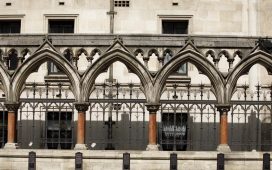Before modernising prisons through new architecture, as discussed by Yvonne Jewkes, there are other issues to consider (‘Places to heal, not to harm’: why brutal prison design kills off hope, 24 September). There are examples of places that have radically transformed prisoners that have not relied on architecture.
For many prison campaigners, the Barlinnie special unit, before it was closed, was the most important innovation in British prisons in the last 50 years. When I visited the unit, it was located in the former women’s wing of the main prison. So it was not specifically designed by architects for changing prisoners who were pejoratively labelled as the most violent in Scotland. Yet it succeeded, not because of the architecture, but because of its compassionate philosophy that staff and prisoners, working together, practised on a daily basis.
Furthermore, even if the average daily prison population returned to the 1993 level of 44,500 (unlikely, given the regressive, prison-building authoritarianism of both major parties), this poses another question: which groups will be ignominiously churned through an inequitable and hypocritical criminal injustice system? If the last 200 years provides a guide, it will be the same people churned in increasingly racialised numbers: people who are destitute, vulnerable, sexually abused and psychologically traumatised. So no matter how well designed prisons might be, Angela Davis’s compelling point remains relevant: “prisons do not disappear problems, they disappear human beings”.
Joe Sim
Emeritus professor, Liverpool John Moores University
From birth, I have had little sense of smell, and yet one haunting memory from my many visits to prisons is of the rancid, pervasive smell of every one of those institutions. Add to that my less-than-perfect vision and serious hearing challenges, and then I claim an entitlement to speak of the sense of incipient despair that must surely ambush every inmate. And what of the debilitating effect on staff?
I am convinced that the architecture of those dour edifices has a singular, adverse bearing. The stench repels; the stark strip lighting assails a clear vision; the slamming of doors disrupts conversations and thought processes.
To go the way of building yet more – and ever larger – prisons would be to compound our collective folly in ever-increasing prison numbers and for ever-longer intervals. “Prison as a last resort” must once more be our mantra.
Malcolm Fowler
Solicitor and higher court advocate (now non-practising), Birmingham
What an excellent article by Yvonne Jewkes. I have worked in and out of prisons for most of my working life and I agree with her absolutely. Entering a prison, you are in a world that looks and smells so different from the outside. This is demoralising for inmates and staff. Of course, prisons are needed for those who pose a risk, but the loss of natural light and greenery does no one any good.
Labour is talking of building more prisons. In reality, we should be sending fewer people to prison, focusing instead on rehabilitation. But if we are imprisoning people, we should remember that the punishment is the loss of liberty. We all flourish in better environments. I endorse Jewkes’ statement that we need an “architecture of hope”, a place where prisoners feel there is an investment in their future and where staff want to work.
Sue Beaumont
Bedford











